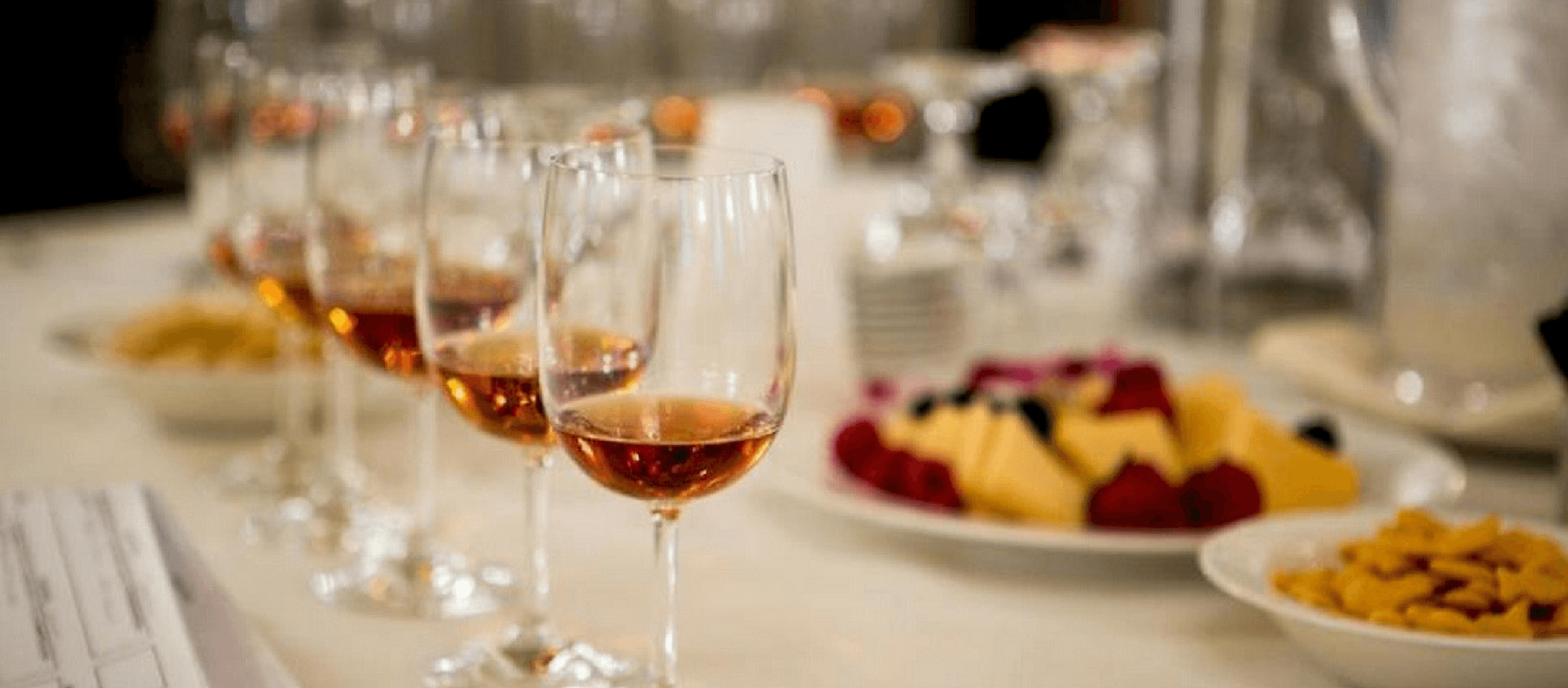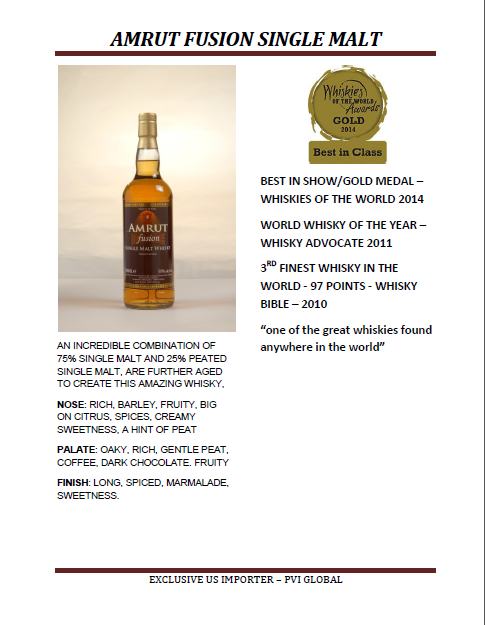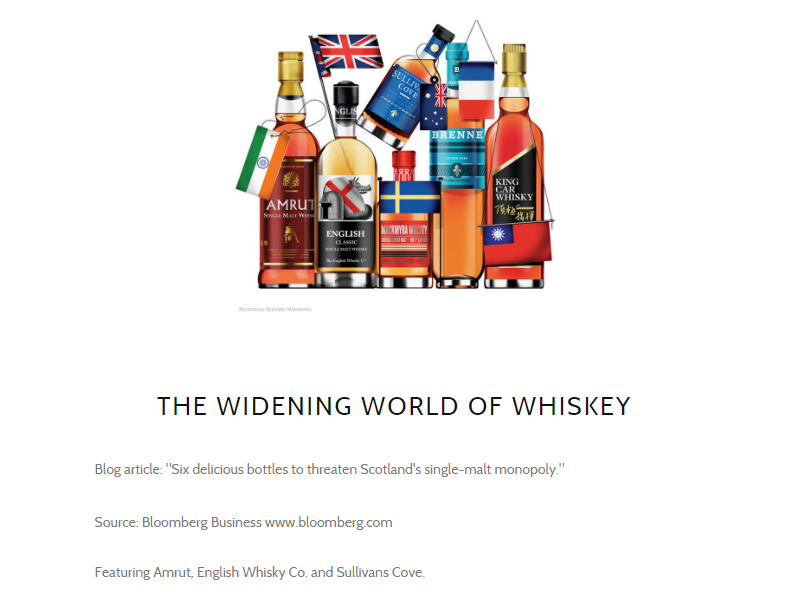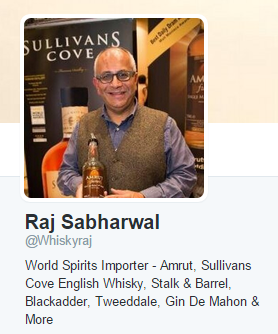Registration Opens
1 May 2024
Judging
Date
26 & 27 March 2025
Winners Announcement
22 April 2025

Whether you are importing a Scottish Single Malt into France or you are exporting a craft vodka from Washington to China, understanding how to support your brands in a new territory is a vital sales skill to ensure successful market penetration. Sales sheets, event schedules, and educational programming are just a few of the pieces in the puzzle.
Defining your brands and shaping your marketplace comes from maintaining stable partnerships from supply to retail by recognizing and implementing the appropriate services needed at each tier. This article examines successful strategies employed by industry veteran and spirit importer Raj Sabharwal on market advancement.
As an importer of international brand names, all of our brands are unique single malt whiskeys from around the world. No matter where they are from, everywhere from Australia to Canada, bringing them into a marketplace that is used to single malts coming from Scotland is a big challenge and educating the consumer that there are alternative options offering equal, and even sometimes superior value, to the well-known Scottish single malts is a very important aspect of our business model. We pride ourselves on being able to educate consumers on the really good single malt whiskeys that are available from around the world. We also use educational programs to show consumers the real meaning of age statements.

Sending out sell sheets to trade is only the first step.
Today, we are finally seeing a lot of Scottish distilleries promoting non-age statement whiskeys, whose interesting profiles we’ve been preaching for the last 5 or 6 years. When you get whiskeys being made in different climatic conditions, the evaporation rate (or the “Angel’s Share”) can be drastically different. In Scotland, most distilleries see 1-2 % evaporation rate. This is starkly contrasted by somewhere like India, where distilleries are typically reporting 15% evaporation rate. The angels might be happier in India, but it also means that most distillers can’t age their whiskey for 12-20 years. However, the rapid maturation really helps to develop the whiskey quicker.
Often at trade shows, I’ll have visitors ask about the age and I always tell them to try the whiskey first, so we can talk about the profile. Age is only one factor that determines a single malt’s final taste. When you are making whiskey, especially single malts, you only have three ingredients: malted barley, yeast, and water. You also have the type of wood being used in the barrel, the location of the distillery, the type of still, the yeast strain, and how you dry or kiln the barley. I’m a real believer that though it’s not called ‘terroir’ like it is in the wine industry, there is a sense of place that comes from tasting a whiskey and it’s paramount that you don’t get distracted by all the marketing that goes into the ‘Age’ of a whiskey.
The new Scottish interest in these types of offerings has really accelerated the trend and we are happy to have been at the forefront in terms of educating our consumers here in North America. It’s important to always develop the markets of your brands and support that development with genuine interest.
In the spirit import business, it’s also important to make sure that your distribution network fits your brands’ profile and gives them the best chance at success.
Typically, small specialized partners who are as passionate about spirits as we are and that have strong sales teams which are willing to be educated on our brands are the best type of distributors to work with. However, you can’t just stop working once your spirits reach their warehouse. Working on the ground and providing the necessary support means taking each brand as if it was your own and using everything you’ve got to really get the product moving.

Getting trade to rate and review your spirits goes a long way to building a reputation.
Micro-distilleries, and the ‘craft’ industry as a whole, have really become popular. What shape do you see the market taking in the next five years and what advice do you have for small and medium sized distilleries trying to find a healthy niche moving forward?
Part of the challenge smaller producers face is when they are up against the larger distillery owners who have a large marketing budget and can spin their stories any way they want. When we are interfacing with consumers and talking one-on-one with them, we often deal with amateur enthusiasts who are willing to try new brands.
As an example, we bring in a small single malt whiskey from Tasmania called Sullivan’s Cove. A year and a half ago we were selling drips and drabs of it and we’d often hear that it was too expensive. When Sullivans Cove French Cask won the World Whiskies Award for Best Single Malt in the UK the demand sky rocketed and we sold out in two weeks. Last year’s order of French Cask, even though the price had gone up, was sold in less than a week. This award was a small boutique distillery’s ticket to the big leagues and amateur drinkers and whiskey aficionados alike were lining up to get front row seats.
It’s really up to the distillery to determine what competitions work best for their profile. There’s probably only two or three competitions in the US, and a handful globally, that really generate international acclaim for their winners. International recognition is definitely the tip top, but you also want to show well in your home markets. Consider what markets you are in and where you want to be and then approach the competitions that matter most in that country or region.
Beyond competitions, you want to be sending samples out to bloggers, magazines, and reviewers so that you can get their opinions and build a repertoire around the industry. The only way you are going to grow a brand is to reach out to a broader demographic, so you should explore every media alleyway and take advantage of the exposure you are presented with by creating interesting marketing content from each and every one of your exposes. Bars and restaurants are great accounts to focus attention on in the spirits industry, so build your repertoire with local media and use it when you are pitching new partners.
As far as trade shows are concerned, concentrate on getting your product into the hands of an audience you can actually engage with. Small trade shows are the best type of platforms to really communicate the distillery message and interact with trade and consumers. The more time you can get people to invest into listening to your story and your distilling technique, the more personal the interaction becomes and the easier it will be for them to remember you. Avoid the 1000 exhibitor events where visitors are overwhelmed by marketing ploys and gimmicks and deliberately approach solid platforms dedicated to building long term partnerships with their exhibitors and visitors. Small and medium sized trade only shows are very effective in building your business partners and expanding distribution.
Have a Story
Just because you believe you are making a great product, how does that translate to a sellable commodity?
Make Sure You Have the Right Distributor
There are a lot of national distributors out there that might express interest in your product and make promises, but inevitably it becomes a challenge to differentiate your brand in their portfolio of over 1500 SKUs. Smaller, more focused distributors often make more sense for micro distilleries. I’d rather have 10 bottles in 10 stores than 1 bottle in 100 stores.
Be Active on Social Media
Get people following you on all of your accounts, capture email addresses, send out information to your databases. If you win an award or gain notoriety then push it out there. Always assume that people DO NOT know about your latest accomplishment, bottling run or latest news.

Actively promoting your portfolio's brands on social media is a must in today's modern market.
Be Honest
If you are buying your product from a mass produced factory, be truthful to your consumer base. Tell them that where you got it and then develop your marketing around the alterations you’ve done to really make it your own. Don’t try and sell it as ‘artisan,’ sell it for its unique characteristics like ‘fully-rounded’ or ‘a slight hint of orange.’ Give your consumers full disclosure because honest marketing resonates much louder over the long run.
Believe in your Product!
Make sure you drink your own product in public! What I mean by that is be passionate about your spirits. Hand-selling is so important, especially when you have a small brand. When you are doing tastings or out on a promotional tour, give it all of your energy and show consumers how special it is to be a part of your story!